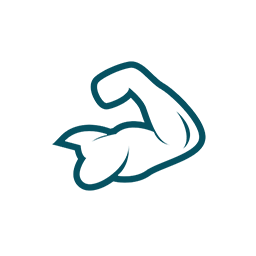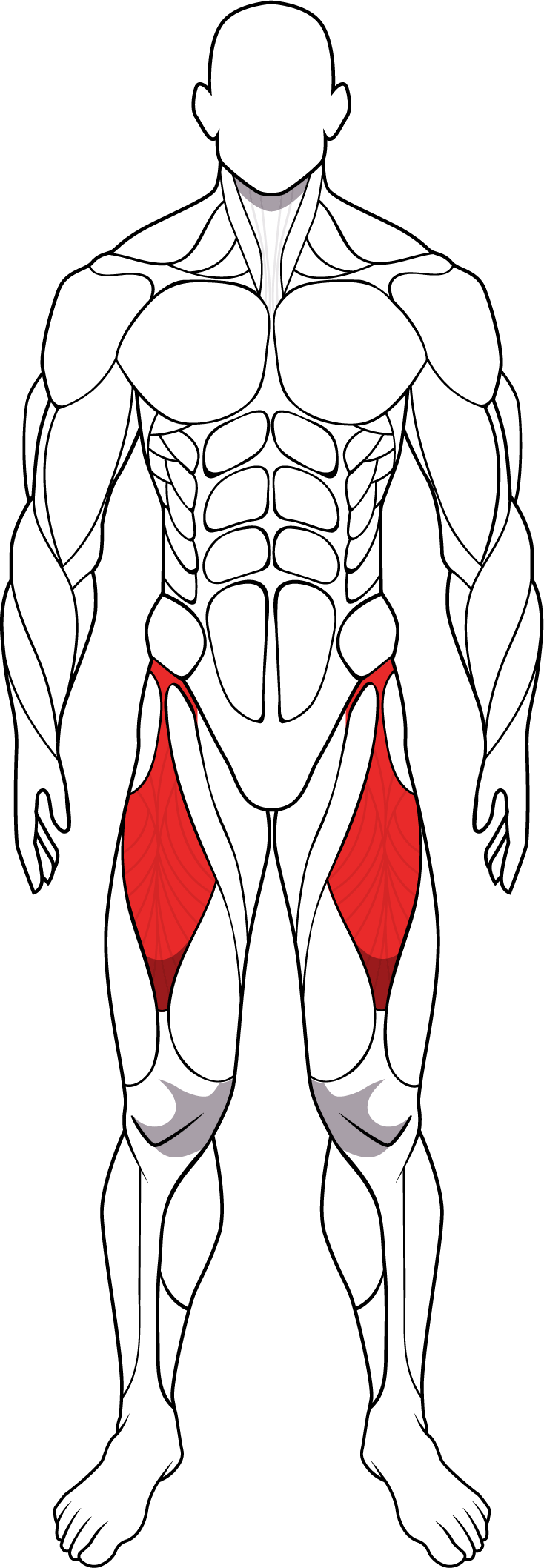The quadriceps, often abbreviated as "quads," are a group of four muscles located on the front of the thigh. These muscles work together to extend the knee joint and flex the hip joint, playing a crucial role in activities such as walking, running, jumping, and squatting. The quadriceps muscles are among the largest and strongest muscles in the human body, and they are essential for maintaining proper posture, stability, and mobility.
The four muscles that make up the quadriceps are:
Rectus Femoris: This is the only quadriceps muscle that crosses both the hip and knee joints. It originates from the front of the hip bone (pelvis) and inserts into the top of the shinbone (tibia) via the quadriceps tendon. The rectus femoris primarily functions to flex the hip joint and extend the knee joint.
Vastus Lateralis: Located on the outer side of the thigh, the vastus lateralis is the largest and most powerful muscle of the quadriceps group. It originates from the upper part of the femur (thigh bone) and inserts into the quadriceps tendon, which attaches to the top of the shinbone. The vastus lateralis primarily functions to extend the knee joint.
Vastus Medialis: Positioned on the inner side of the thigh, the vastus medialis is important for stabilizing the patella (kneecap) and preventing it from being pulled laterally during knee extension. It originates from the lower part of the femur and also inserts into the quadriceps tendon. The vastus medialis primarily functions to extend the knee joint.
Vastus Intermedius: This muscle is located deep within the thigh, underneath the rectus femoris. It originates from the front of the femur and inserts into the quadriceps tendon. The vastus intermedius primarily functions to extend the knee joint.
Together, these four muscles work synergistically to produce powerful movements, such as kicking, jumping, and lifting heavy objects. Strengthening the quadriceps is important for improving athletic performance, enhancing functional mobility, and preventing injuries related to the knee and hip joints. Exercises that target the quads include squats, lunges, leg presses, leg extensions, and various plyometric movements. It's essential to maintain balanced strength and flexibility in the quadriceps muscles to support overall lower body function and reduce the risk of imbalances or injuries.
Rectus Femoris: This is the only quadriceps muscle that crosses both the hip and knee joints. It originates from the front of the hip bone (pelvis) and inserts into the top of the shinbone (tibia) via the quadriceps tendon. The rectus femoris primarily functions to flex the hip joint and extend the knee joint.
Vastus Lateralis: Located on the outer side of the thigh, the vastus lateralis is the largest and most powerful muscle of the quadriceps group. It originates from the upper part of the femur (thigh bone) and inserts into the quadriceps tendon, which attaches to the top of the shinbone. The vastus lateralis primarily functions to extend the knee joint.
Vastus Medialis: Positioned on the inner side of the thigh, the vastus medialis is important for stabilizing the patella (kneecap) and preventing it from being pulled laterally during knee extension. It originates from the lower part of the femur and also inserts into the quadriceps tendon. The vastus medialis primarily functions to extend the knee joint.
Vastus Intermedius: This muscle is located deep within the thigh, underneath the rectus femoris. It originates from the front of the femur and inserts into the quadriceps tendon. The vastus intermedius primarily functions to extend the knee joint.
Together, these four muscles work synergistically to produce powerful movements, such as kicking, jumping, and lifting heavy objects. Strengthening the quadriceps is important for improving athletic performance, enhancing functional mobility, and preventing injuries related to the knee and hip joints. Exercises that target the quads include squats, lunges, leg presses, leg extensions, and various plyometric movements. It's essential to maintain balanced strength and flexibility in the quadriceps muscles to support overall lower body function and reduce the risk of imbalances or injuries.


